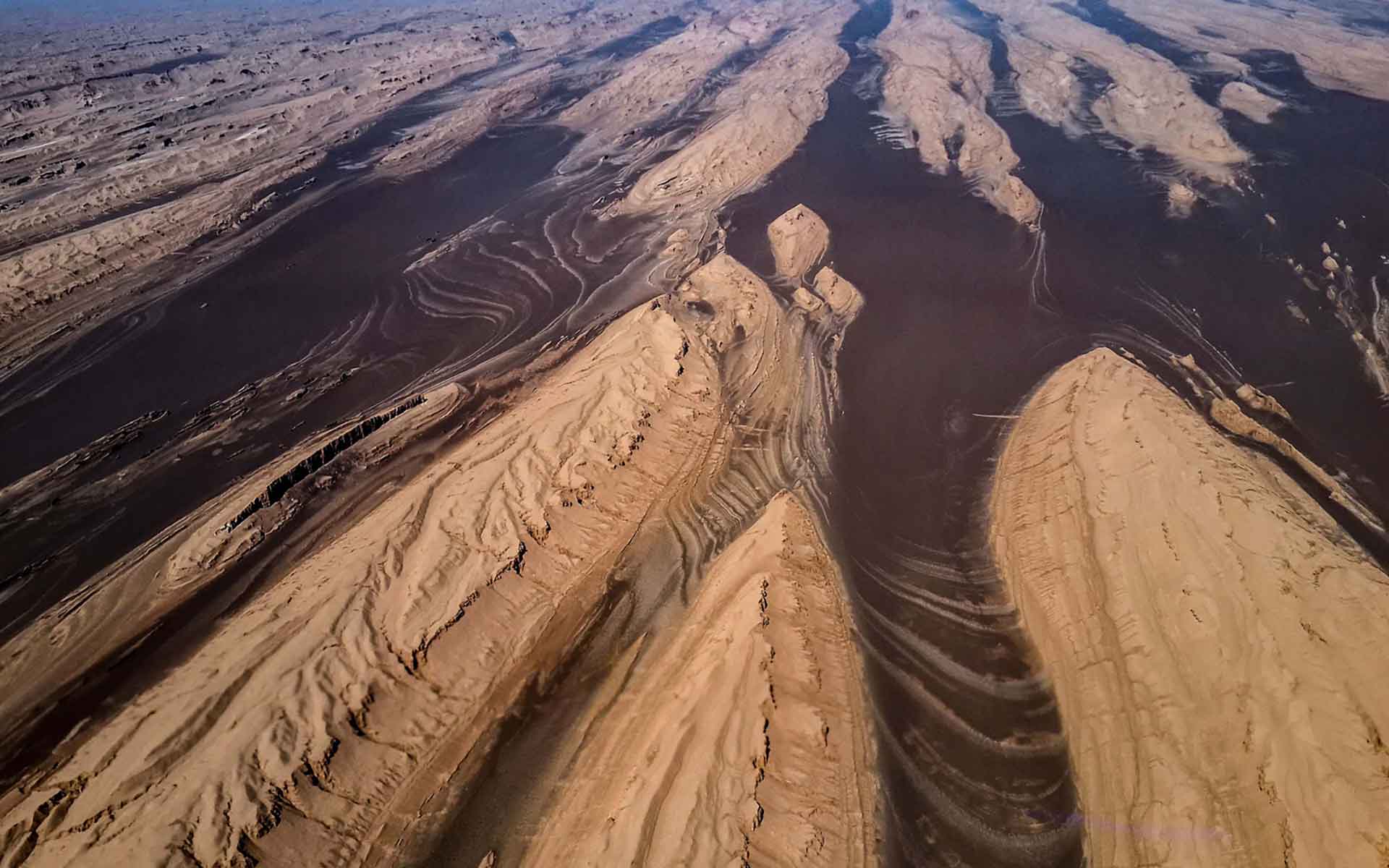
Yardang, often referred to as the “rock sculptor of the desert,” is a remarkable geological formation found in various arid regions around the world. These unique landforms captivate both geologists and nature enthusiasts alike. Characterized by their elongated ridges and grooves, yardangs are the result of thousands of years of erosion caused by wind and water.
In this article, we will delve into the fascinating world of yardangs and uncover 13 extraordinary facts about these enigmatic formations. From their formation and locations to their importance in understanding Earth’s history, yardangs offer a fascinating glimpse into the geological wonders of our planet. So, let’s embark on this journey and learn more about these captivating geological features and the secrets they hold.
Key Takeaways:
- Yardangs are unique rock formations shaped by wind erosion, found in deserts worldwide. They come in various sizes and shapes, sometimes resembling animals or objects, making them a photographer’s dream.
- These formations provide valuable archaeological information and can create microclimates, acting as natural barriers. Their ever-changing nature and dramatic landscapes have made them popular filming locations.
Yardang formations are a result of wind erosion.
Yardang formations, also known as yardangs, are fascinating geological features that are formed as a result of wind erosion over thousands of years. The relentless force of wind sculpts the surface of rocks, creating elongated ridges and grooves.
The term “yardang” comes from a Turkic word.
The word “yardang” originates from the Turkic language, specifically from the Uighur word “y?rd?m,” which means “steep bank” or “cliff.
Yardangs can be found in deserts all over the world.
These unique formations exist in various deserts across the globe, including the deserts of China, Iran, Egypt, and the United States. They are testament to the power and beauty of nature.
Yardangs often have a streamlined shape.
Yardangs typically have a streamlined shape, with a gently sloping windward side and a steep, sharp leeward side. This streamlined form is a result of the persistent winds shaping the rock surfaces over time.
Yardangs can vary in size.
These formations can range in size from a few meters to several kilometers in length. Some yardangs are small and clustered together, while others can stretch across vast expanses of desert landscapes.
Yardangs can resemble the shape of animals or objects.
Due to their unique formations, yardangs can sometimes resemble the shapes of animals, objects, or even human-like figures. This adds an element of intrigue to these natural wonders.
Yardangs are composed of various types of rock.
Yardangs can be made up of different types of rocks, including sandstone, limestone, and granite. The composition of the rock plays a role in the formation and durability of the yardang.
Yardangs continue to evolve over time.
While yardangs may take thousands of years to form, they are not static features. Wind erosion continues to shape and reshape them, giving them their unique and ever-changing characteristics.
Yardangs have been used as filming locations.
Thanks to their otherworldly appearance, yardangs have served as filming locations for various movies and TV shows. Their dramatic landscapes add a sense of mystery and beauty to the visual storytelling.
Yardangs provide vital archaeological information.
Due to their preservation of wind-blown sediments, yardangs are valuable sources of information for studying past climates and the geological history of the region they are found in.
Yardangs can create microclimates.
The unique shape and orientation of yardangs can create microclimates within their vicinity, altering wind patterns and creating localized temperature variations.
Yardangs can act as natural barriers.
Yardangs can sometimes act as natural barriers, protecting certain areas from strong winds or sandstorms. Their presence can have a significant impact on the local ecosystem.
Yardangs are a photographer’s delight.
Photographers are drawn to the mesmerizing shapes and textures of yardangs. The interplay of light and shadows on these formations makes for breathtaking and artistic compositions.
Conclusion
In conclusion, yardangs are truly remarkable geographical formations that captivate the imagination with their unique features and fascinating origins. From their distinct shapes to their formation processes, yardangs offer valuable insights into the dynamic forces of nature and the intricate interplay between wind and erosion.These extraordinary landforms can be found in diverse locations around the world, from deserts to plateaus, showcasing the beauty and complexity of our planet’s geography. Whether it’s the iconic Lut Desert in Iran or the stunning Yardang National Geopark in China, yardangs never fail to amaze and inspire.As we continue to explore and study these remarkable formations, there is still much to learn and discover. From their environmental significance to their impact on local ecosystems, yardangs present a wealth of research opportunities for geographers, environmental scientists, and nature enthusiasts alike.So, the next time you come across a picture or a mention of a yardang, remember the extraordinary story behind it. These natural wonders serve as a testament to the power and artistry of nature, reminding us of the countless marvels that await our exploration.
FAQs
1. What exactly is a yardang?
A yardang is a long, elongated landform created by wind erosion. It typically has a streamlined shape, with a steep, narrow ridge and gentle slopes on either side.
2. Where can you find yardangs?
Yardangs can be found in various locations around the world, predominantly in arid and desert regions. Some well-known areas with yardangs include the Lut Desert in Iran, the Badain Jaran Desert in China, and the Namib Desert in Namibia.
3. How are yardangs formed?
Yardangs are formed through a combination of wind erosion and abrasion. As strong winds blow over soft or poorly consolidated sedimentary rocks, they gradually wear away the rock material, resulting in the characteristic elongated shape of a yardang.
4. What is the significance of yardangs?
Yardangs provide valuable insights into the geological history of an area. The unique shapes and formations of yardangs can reveal information about past climatic conditions, wind patterns, and the geological processes that have shaped the landscape over time.
5. Can yardangs be visited and explored?
Yes, many yardang formations are accessible to visitors and can be explored. Some locations, such as the Yardang National Geopark in China, offer guided tours and educational programs to learn more about these fascinating formations.
6. Are yardangs fragile and susceptible to damage?
While yardangs are naturally formed and can withstand normal weathering, they are still fragile and susceptible to damage through human activities. It is important to respect and protect these unique landforms to preserve their beauty and scientific value for generations to come.
Yardangs' extraordinary shapes and geological significance make them captivating natural wonders. These wind-sculpted formations offer a glimpse into Earth's dynamic processes, revealing secrets of the past and shaping unique landscapes. Yardangs inspire awe with their animal-like appearances, varying sizes, and evolving nature. Beyond their visual allure, yardangs provide valuable archaeological insights and create distinct microclimates. As you explore the fascinating world of yardangs, consider delving into the intriguing history and landmarks of Yumen, a city with its own remarkable tales to tell.
Was this page helpful?
Our commitment to delivering trustworthy and engaging content is at the heart of what we do. Each fact on our site is contributed by real users like you, bringing a wealth of diverse insights and information. To ensure the highest standards of accuracy and reliability, our dedicated editors meticulously review each submission. This process guarantees that the facts we share are not only fascinating but also credible. Trust in our commitment to quality and authenticity as you explore and learn with us.


